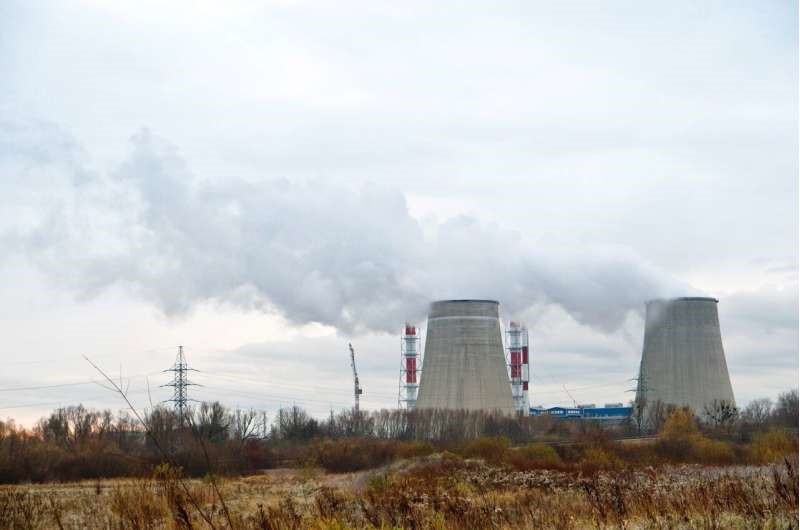Description

Disclaimer: Copyright infringement not intended.
Context
The discovery made by researchers at Washington State University about the Fischer-Tropsch process has significant implications for improving fuel production efficiency.
Details
- Self-Sustained Oscillations: The researchers discovered previously unknown self-sustained oscillations in the Fischer-Tropsch process. Unlike many catalytic reactions that typically have one steady state, this reaction periodically fluctuates between high and low activity states.
- Controlled Oscillations: Unlike rate oscillations in chemical reactions that are often undesirable due to safety concerns, these oscillations in the Fischer-Tropsch process are controlled and well-understood. This opens up new possibilities for enhancing the reaction rate and improving the yields of desired products.
- Knowledge-Based Approach: This discovery provides a deep understanding of the underlying mechanisms of the Fischer-Tropsch process, enabling researchers to take a knowledge-based approach to research and development. This understanding will be invaluable in designing catalysts intentionally and fine-tuning reactions to induce oscillatory states for improved catalytic performance.
- Accidental Discovery: The researchers stumbled upon these oscillations by accident when a graduate student encountered difficulties stabilizing the temperature in the reaction. This serendipitous discovery ultimately led to a breakthrough in understanding the Fischer-Tropsch process.
- Mechanistic Insight: The study not only identified the presence of oscillatory states but also explained why they occur. As the reaction generates heat, the temperature rises, causing the reactant gases to lose contact with the catalyst surface and slowing down the reaction. This, in turn, cools the system, allowing reactant gases to return to the catalyst surface, and the reaction accelerates again.
- Theoretical Modeling: The researchers were able to theoretically model the oscillatory behavior of the Fischer-Tropsch reaction, which closely matched the experimental data. This modeling enhances their ability to predict and control the reaction.
- Significance of the Discovery: Fischer-Tropsch is a crucial process in the production of fuels and chemicals, and this discovery offers a revolutionary approach to optimizing its efficiency. It has the potential to transform how catalysts are designed and used in this process.
- Exciting Breakthrough: The researchers expressed their excitement about this breakthrough, highlighting how it can significantly impact the field of catalytic chemistry and fuel production.

About the process
- The Fischer-Tropsch process is a catalytic chemical reaction used to convert carbon-based feedstocks, such as coal, natural gas, or biomass, into liquid hydrocarbons, which can be further refined into various fuels and chemicals.
- This process has been of significant industrial importance for nearly a century and continues to be a subject of research and development due to its potential in meeting energy and chemical production needs while reducing greenhouse gas emissions
History and Background:
- Origins: The Fischer-Tropsch process is named after its inventors, Franz Fischer and Hans Tropsch, who developed it in the 1920s in Germany.
- World War II: During World War II, the process played a crucial role in Germany's synthetic fuel production when access to conventional oil was limited.
Basic Chemistry:
- Feedstocks: Fischer-Tropsch reactions can use a variety of feedstocks, including coal, natural gas, and biomass, as sources of carbon.
- Reaction Steps: The process involves a series of chemical reactions that convert carbon monoxide (CO) and hydrogen (H2) into longer-chain hydrocarbons, such as paraffins and olefins.
Catalysts:
- Catalysts: Catalysts play a critical role in Fischer-Tropsch reactions. Common catalysts include iron, cobalt, and ruthenium-based materials.
- Catalytic Mechanisms: Understanding the catalytic mechanisms is essential for optimizing the process. The exact mechanisms can vary depending on the catalyst used.
Product Yields and Selectivity:
- Product Spectrum: Fischer-Tropsch reactions produce a range of hydrocarbon products, from light gases (e.g., methane) to heavier liquids (e.g., waxes).
- Selectivity: The choice of catalyst and process conditions can influence the selectivity towards specific products. Researchers aim to maximize the yield of desired liquid fuels.
Applications:
- Fuel Production: Historically, the Fischer-Tropsch process has been used for the production of synthetic fuels, such as gasoline, diesel, and aviation fuels.
- Chemical Industry: It is also utilized to produce a variety of chemical feedstocks and specialty chemicals.
- Environmental Considerations: Fischer-Tropsch can be part of strategies to reduce carbon emissions by converting coal or natural gas into cleaner-burning fuels.
Challenges and Research:
- Efficiency: One of the primary challenges is improving the efficiency of the process, including enhancing catalyst performance and reducing energy consumption.
- Environmental Impact: Researchers are exploring ways to reduce the environmental footprint of the Fischer-Tropsch process, such as capturing and utilizing carbon dioxide emissions.
- Alternative Feedstocks: Investigations into using renewable feedstocks and waste materials are ongoing to make the process more sustainable.
Modern Developments:
- Advanced Catalysis: New catalyst materials and formulations are being developed to make the process more efficient and selective.
- Integration with Renewable Energy: Combining Fischer-Tropsch with renewable energy sources, such as solar or wind power, is being explored to reduce greenhouse gas emissions.
Future Prospects:
- Energy Transition: The Fischer-Tropsch process may play a role in the transition to a low-carbon energy future by producing clean fuels from abundant carbon sources.
- Hydrogen Economy: With growing interest in hydrogen as an energy carrier, Fischer-Tropsch may find applications in hydrogen production and conversion.
.jpg)
Conclusion
The discovery of self-sustained oscillations in the Fischer-Tropsch process is a groundbreaking finding that could lead to more efficient and controlled fuel production processes, with broader implications for the chemical industry as a whole.
|
PRACTICE QUESTION
Q. Discuss the significance of the Fischer-Tropsch process in the context of energy production and environmental sustainability. Highlight the key factors affecting its efficiency and the potential role it can play in a low-carbon energy future. (250 Words)
|
















